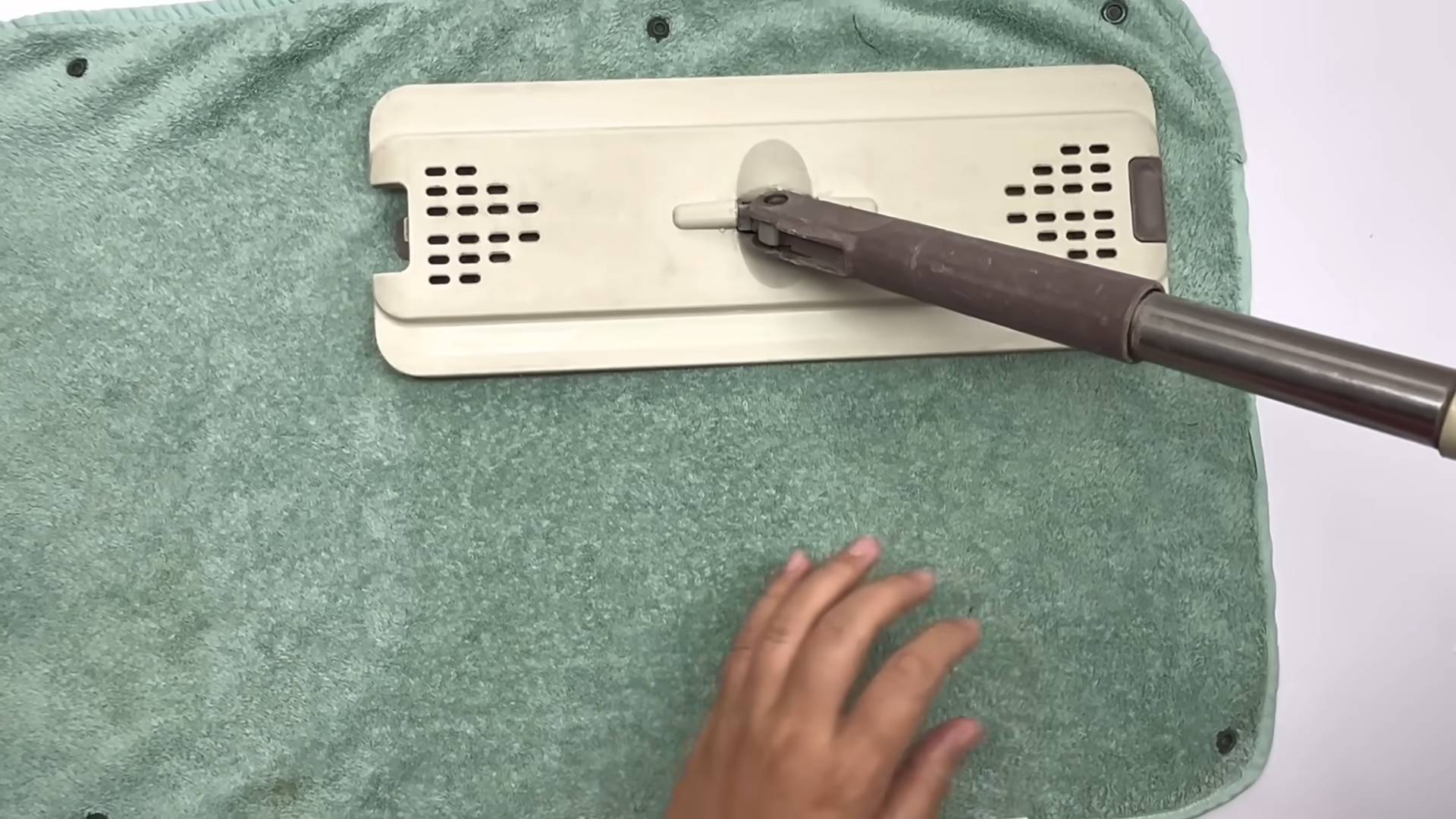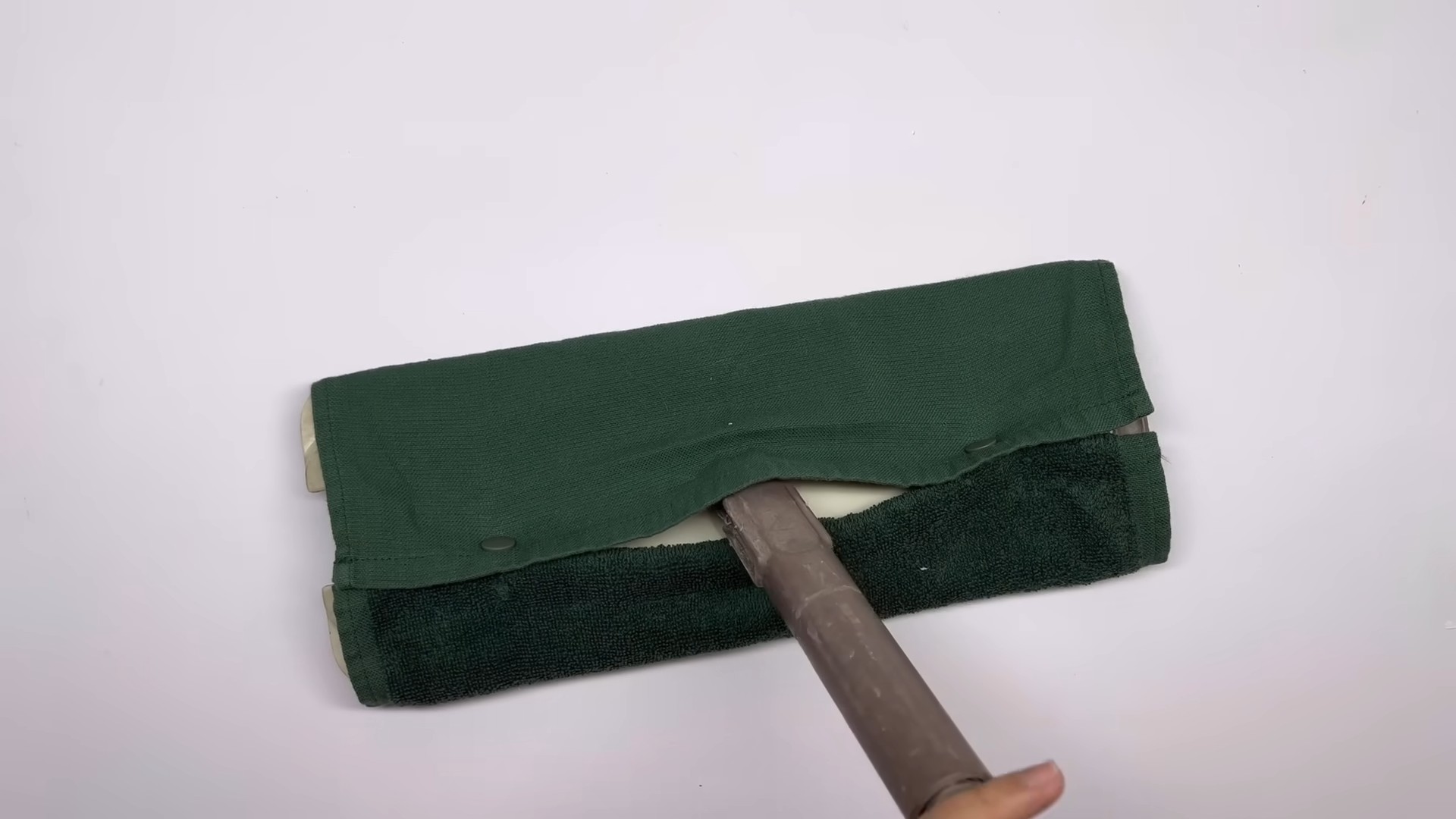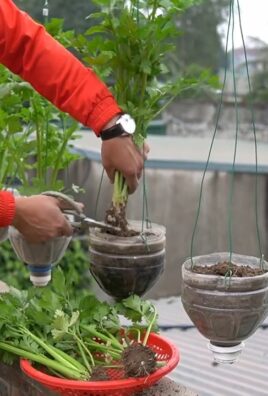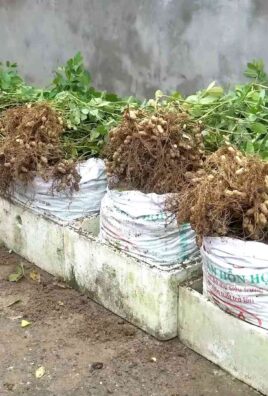Grow Super Fruitful Cucumbers – imagine biting into a crisp, juicy cucumber, bursting with flavor, that you nurtured from a tiny seed right in your own backyard! For centuries, cucumbers have been a staple in gardens worldwide, dating back to ancient civilizations in India. They were prized not only for their refreshing taste but also for their medicinal properties. Today, we still cherish them, but sometimes, getting a truly bountiful harvest can feel like a challenge.
Are you tired of cucumber plants that promise the world but deliver only a handful of fruits? Do you dream of overflowing baskets of cucumbers for salads, pickles, and refreshing summer drinks? I know I have! That’s why I’m so excited to share some tried-and-true DIY tricks and hacks that will help you grow super fruitful cucumbers, even if you’re a beginner gardener.
This isn’t just about planting seeds and hoping for the best. We’re diving deep into the secrets of cucumber cultivation, from soil preparation to pollination techniques, all designed to maximize your yield. These simple, yet effective, methods will empower you to transform your garden into a cucumber paradise. Get ready to impress your friends and family with your homegrown bounty! Let’s get started and unlock the secrets to a cucumber harvest you’ll be proud of.

Grow Super Fruitful Cucumbers: My Secret DIY Hack
Okay, cucumber lovers, gather ’round! I’m about to spill my secrets on how to grow cucumbers that are so prolific, you’ll be giving them away to everyone you know (and still have plenty for yourself!). This isn’t just about throwing some seeds in the ground and hoping for the best. This is about creating the *perfect* environment for your cucumber plants to thrive and produce like crazy. I’ve spent years tweaking this method, and trust me, it works!
Choosing the Right Cucumber Variety
Before we even get our hands dirty, let’s talk cucumbers. Not all cucumbers are created equal, and choosing the right variety is crucial for success.
* Consider your climate: Some varieties are better suited for warmer climates, while others can tolerate cooler temperatures. Do a little research on what grows well in your area.
* Pickling vs. Slicing: Are you dreaming of crunchy pickles or refreshing salads? Pickling cucumbers are smaller and have thicker skins, while slicing cucumbers are longer and have thinner skins.
* Disease Resistance: Look for varieties that are resistant to common cucumber diseases like powdery mildew and downy mildew. This will save you a lot of headaches (and potential crop loss) down the road.
* My Personal Favorites: I’ve had great success with ‘Spacemaster’ (compact and great for containers), ‘Marketmore 76’ (reliable slicer), and ‘National Pickling’ (perfect for, well, pickling!).
Preparing the Soil: The Foundation for Success
Cucumbers are heavy feeders, meaning they need a lot of nutrients to produce those delicious fruits. So, preparing the soil properly is absolutely essential.
* Sunlight is Key: Cucumbers need at least 6-8 hours of direct sunlight per day. Choose a location in your garden that gets plenty of sunshine.
* Well-Draining Soil: Cucumbers don’t like soggy feet! Make sure your soil drains well. If you have heavy clay soil, amend it with plenty of organic matter.
* Amend, Amend, Amend!: This is where the magic happens. I like to amend my soil with a generous amount of compost, well-rotted manure, and a slow-release organic fertilizer. This will provide your cucumber plants with a steady supply of nutrients throughout the growing season.
* Soil pH: Cucumbers prefer a soil pH between 6.0 and 7.0. You can test your soil pH with a simple soil testing kit. If your soil is too acidic, add lime to raise the pH. If it’s too alkaline, add sulfur to lower the pH.
The DIY Trellis System: Vertical Growing for Maximum Yield
Cucumbers are vines, and they love to climb! Providing them with a trellis not only saves space in your garden but also improves air circulation, reduces disease, and makes harvesting easier. Plus, it just looks cool!
* Why Trellising Matters: Trellising keeps the fruits off the ground, preventing rot and pest problems. It also allows for better air circulation, which helps to prevent fungal diseases.
* My Simple DIY Trellis: I use a simple A-frame trellis made from wooden stakes and chicken wire. It’s easy to build and very effective.
* Materials You’ll Need:
* Four wooden stakes (about 6 feet long)
* Chicken wire (enough to cover the A-frame)
* Staple gun
* Staples
* Wire cutters
* Building the Trellis:
1. Drive two stakes into the ground about 3 feet apart, angled slightly inward.
2. Repeat with the other two stakes, creating an A-frame shape.
3. Secure the stakes together at the top with wire or rope.
4. Attach the chicken wire to the frame using the staple gun. Make sure the wire is taut.
5. Bury the bottom of the trellis a few inches into the ground for added stability.
Planting Your Cucumber Seedlings (or Seeds)
Now that our soil is prepped and our trellis is ready, it’s time to get those cucumber plants in the ground!
* Starting Seeds Indoors (Optional): I like to start my cucumber seeds indoors about 3-4 weeks before the last expected frost. This gives them a head start and allows me to get a jump on the growing season.
1. Sow the seeds in small pots filled with seed-starting mix.
2. Keep the soil moist and warm (around 70-80°F).
3. Once the seedlings have a few true leaves, they’re ready to transplant.
* Direct Sowing: You can also direct sow cucumber seeds directly into the garden after the last frost.
1. Sow the seeds about 1 inch deep and 12 inches apart.
2. Keep the soil moist until the seeds germinate.
* Transplanting Seedlings:
1. Harden off your seedlings by gradually exposing them to outdoor conditions for a week before transplanting.
2. Dig a hole slightly larger than the root ball of the seedling.
3. Gently remove the seedling from the pot and place it in the hole.
4. Backfill the hole with soil and water thoroughly.
5. Space the plants about 12-18 inches apart along the trellis.
Watering and Fertilizing: Keeping Your Cucumbers Happy
Consistent watering and regular fertilization are essential for healthy cucumber plants and abundant fruit production.
* Watering: Cucumbers need consistent moisture, especially during hot weather. Water deeply and regularly, aiming for about 1 inch of water per week. Avoid overhead watering, as this can promote fungal diseases. Drip irrigation or soaker hoses are ideal.
* Mulching: Apply a layer of mulch around your cucumber plants to help retain moisture, suppress weeds, and regulate soil temperature. I like to use straw or wood chips.
* Fertilizing: Feed your cucumber plants every 2-3 weeks with a balanced organic fertilizer. You can also use a liquid seaweed fertilizer for an extra boost.
* My Secret Fertilizer Boost: I make a compost tea by steeping a bag of compost in a bucket of water for a few days. This is a great way to provide your cucumber plants with a nutrient-rich boost.
Pest and Disease Control: Protecting Your Precious Crop
Cucumbers are susceptible to a few common pests and diseases. Here’s how to keep them at bay:
* Common Pests:
* Cucumber Beetles: These little guys can transmit diseases and damage foliage. Handpick them off the plants or use row covers to protect your seedlings.
* Aphids: These sap-sucking insects can weaken your plants. Spray them with a strong stream of water or use insecticidal soap.
* Squash Bugs: These pests can be difficult to control. Handpick them off the plants or use a squash bug trap.
* Common Diseases:
* Powdery Mildew: This fungal disease causes a white powdery coating on the leaves. Improve air circulation and spray with a fungicide if necessary.
* Downy Mildew: This fungal disease causes yellow spots on the leaves. Improve air circulation and spray with a fungicide if necessary.
* My Secret Weapon: I swear by neem oil for controlling both pests and diseases. It’s a natural and effective solution.
Pollination: Ensuring Fruit Set
Cucumbers need to be pollinated in order to produce fruit. If you’re not seeing any cucumbers developing, it could be a pollination problem.
* Attracting Pollinators: Plant flowers near your cucumber plants to attract bees and other pollinators.
* Hand-Pollinating: If you’re not seeing enough pollinators, you can hand-pollinate your cucumber flowers.
1. Identify the male and female flowers. Male flowers have a long, thin stem, while female flowers have a small cucumber-like fruit behind the flower.
2. Use a small paintbrush to collect pollen from the male flower.
3. Transfer the pollen to the female flower.
* Parthenocarpic Varieties: Consider growing parthenocarpic cucumber varieties, which don’t require pollination to produce fruit. These are great for growing in greenhouses or areas with limited pollinator activity.
Harvesting: The Sweet Reward
Finally, the moment we’ve all been waiting for – harvesting those delicious cucumbers!
* When to Harvest: Harvest your cucumbers when they are the desired size and color. Pickling cucumbers are usually harvested when they are about 2-4 inches long, while slicing cucumbers are harvested when they are about 6-8 inches long.
* How to Harvest: Use a sharp knife or pruning shears to cut the cucumbers from the vine. Be careful not to damage the plant.
*

Conclusion
So, there you have it! This simple, yet incredibly effective DIY trick for growing super fruitful cucumbers is a game-changer for any gardener, regardless of experience level. We’ve walked you through the process, highlighting the benefits of this method, and hopefully, dispelled any doubts you might have had.
Why is this a must-try? Because it addresses some of the most common challenges faced when growing cucumbers: inconsistent watering, lack of support, and susceptibility to soilborne diseases. By implementing this DIY approach, you’re creating an optimal environment for your cucumber plants to thrive, leading to a significantly increased yield of delicious, crisp cucumbers. Imagine baskets overflowing with fresh cucumbers, ready for salads, pickles, or a refreshing summer snack!
But the beauty of this DIY trick lies not only in its effectiveness but also in its adaptability. Feel free to experiment with variations to suit your specific needs and preferences. For example, if you live in a particularly windy area, consider adding extra support to your structure to prevent it from toppling over. You could also incorporate companion planting around the base of your cucumber plants to deter pests naturally. Marigolds, basil, and nasturtiums are all excellent choices.
Another variation to consider is the type of container you use. While a large plastic container works well, you could also repurpose an old barrel, a large terracotta pot, or even a raised garden bed. Just ensure that the container is large enough to accommodate the mature cucumber plant and has adequate drainage.
Furthermore, think about the type of cucumber you’re growing. This DIY trick works well for most cucumber varieties, but some may benefit from additional support or pruning. Research your specific variety to determine its unique needs. For instance, vining cucumbers will require more vertical support than bush varieties.
The key takeaway here is that gardening is an ongoing experiment. Don’t be afraid to tweak and adjust this DIY trick to find what works best for you and your garden. The most important thing is to provide your cucumber plants with the essential elements they need to flourish: consistent watering, adequate sunlight, and proper support.
We are confident that by implementing this DIY trick, you’ll be amazed by the results. You’ll not only enjoy a bountiful harvest of delicious cucumbers but also gain a deeper appreciation for the wonders of gardening.
So, what are you waiting for? Gather your materials, follow the steps outlined in this article, and get ready to grow some super fruitful cucumbers! We encourage you to try this DIY trick and share your experiences with us. Let us know what worked well for you, what challenges you encountered, and any variations you tried. Your feedback will help us refine this method and make it even more effective for other gardeners. Share your photos and stories on social media using #SuperFruitfulCucumbers and inspire others to embark on their own cucumber-growing adventures. Happy gardening!
Frequently Asked Questions (FAQ)
What type of container is best for this DIY cucumber growing method?
The best type of container is one that is large enough to accommodate the mature cucumber plant and has adequate drainage. A large plastic container (at least 10 gallons) works well, but you can also repurpose an old barrel, a large terracotta pot, or even a raised garden bed. Ensure the container has drainage holes to prevent waterlogging, which can lead to root rot. The material of the container isn’t as important as its size and drainage capabilities.
How often should I water my cucumber plants grown using this method?
Watering frequency depends on several factors, including the weather, the type of container you’re using, and the stage of growth of your cucumber plants. Generally, you should water deeply whenever the top inch of soil feels dry to the touch. During hot, dry weather, you may need to water daily, or even twice a day. In cooler, more humid weather, you may only need to water every few days. The key is to monitor the soil moisture and adjust your watering schedule accordingly. Avoid overwatering, as this can lead to root rot. Using a moisture meter can be helpful in determining the soil’s moisture level.
What type of soil should I use for growing cucumbers in containers?
Use a well-draining potting mix that is rich in organic matter. Avoid using garden soil, as it can become compacted in containers and hinder drainage. A good potting mix will provide the necessary nutrients and aeration for healthy root growth. You can also amend the potting mix with compost or other organic materials to further improve its fertility and drainage. Look for a potting mix specifically formulated for vegetables or containers.
How much sunlight do cucumber plants need?
Cucumber plants need at least 6-8 hours of direct sunlight per day to thrive. Choose a location for your container that receives plenty of sunlight throughout the day. If you live in a particularly hot climate, you may need to provide some afternoon shade to prevent the plants from overheating. Insufficient sunlight can lead to stunted growth and reduced fruit production.
What kind of support structure should I use for my cucumber plants?
The type of support structure you use will depend on the variety of cucumber you’re growing. Vining cucumbers require vertical support, such as a trellis, a fence, or a tomato cage. Bush cucumbers, on the other hand, may not need any support at all. When choosing a support structure, make sure it is sturdy enough to support the weight of the mature cucumber plant and its fruit. You can use twine, zip ties, or plant clips to attach the cucumber vines to the support structure.
How do I prevent pests and diseases from affecting my cucumber plants?
There are several things you can do to prevent pests and diseases from affecting your cucumber plants. First, choose disease-resistant varieties whenever possible. Second, practice good sanitation by removing any dead or diseased leaves from the plants. Third, water the plants at the base to avoid wetting the foliage, which can create a favorable environment for fungal diseases. Fourth, monitor the plants regularly for pests and diseases and take action promptly if you notice any problems. You can use organic pest control methods, such as insecticidal soap or neem oil, to control pests. Companion planting with marigolds, basil, or nasturtiums can also help deter pests.
When should I harvest my cucumbers?
Harvest cucumbers when they are the desired size and color for the variety you are growing. Overripe cucumbers can become bitter and seedy. Regularly harvesting cucumbers will also encourage the plant to produce more fruit. Use a sharp knife or pruning shears to cut the cucumbers from the vine, leaving a small stem attached.
Can I grow cucumbers indoors using this DIY method?
Yes, you can grow cucumbers indoors using this DIY method, but you will need to provide adequate light. Place the container near a sunny window that receives at least 6-8 hours of direct sunlight per day. If you don’t have enough natural light, you can supplement with grow lights. You will also need to pollinate the cucumber flowers manually, as there will be no bees or other pollinators indoors. Use a small paintbrush to transfer pollen from the male flowers to the female flowers.
What are some common problems I might encounter when growing cucumbers, and how can I fix them?
Some common problems include powdery mildew, cucumber beetles, and blossom end rot. Powdery mildew is a fungal disease that can be treated with a fungicide. Cucumber beetles are pests that can be controlled with insecticidal soap or neem oil. Blossom end rot is caused by a calcium deficiency and can be prevented by adding calcium to the soil or using a calcium-rich fertilizer. Ensure consistent watering to help prevent blossom end rot.
How does this DIY trick help in growing super fruitful cucumbers?
This DIY trick promotes super fruitful cucumbers by providing a controlled and optimized growing environment. The container allows for better soil control and drainage, preventing root rot and ensuring the plants receive the necessary nutrients. The support structure encourages vertical growth, improving air circulation and sunlight exposure, which leads to healthier plants and increased fruit production. The elevated container also helps to protect the plants from soilborne diseases and pests. By addressing these key factors, this DIY method creates the ideal conditions for cucumber plants to thrive and produce an abundant harvest.




Leave a Comment